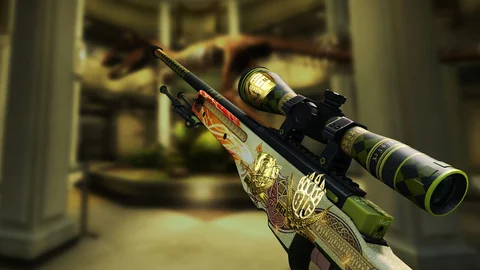Relishing the thrill of Counter-Strike: Global Offensive (CS: GO) isn’t just limited to the adrenaline rush generated from rapid-fire shootouts or strategic landmines. A significant layer of fun also derives from the game’s unique feature of ‘skins’, cosmetic changes that modify the appearance of weapons and equipment in the game.
Introduction to CS: GO Skins
A fascinating element in CS: GO, ‘skins’ offer no direct gameplay advantages, but they have swiftly become status symbols within the player community. The appeal of skins lies in their capacity to customize the look of one’s game arsenal, turning standard-issue equipment into eye-catching pieces that stand out amidst the chaos of a firefight. Additionally, skins have grown into a subculture commerce of their own, turning CS: GO from a simple shooting game into a dynamic virtual economy.
How are CS: GO Skins Acquired?
There are several ways one can lay their hands on these colorful and detailed weapon designs. They randomly drop in-game, enclosed in ‘cases’, which can be opened using keys purchased with actual money. Further, skins can also be bought directly from the Steam Marketplace or third-party marketplaces like Skinsmonkey.com, offering a broad spectrum of prices, rarity levels, and styles.
Factors Influencing Skin Prices
The price tags on CS: GO skins fluctuate based on several variables. Not unlike real-world collectibles, the value of skins is driven by aspects like rarity, demand, condition, and sometimes even the fame of a player who previously owned the skin. Unboxed skins, especially those in factory-new condition or those part of exceedingly rare collections, naturally command hefty price tags.
A Close Look at the Skin Market
The CS: GO skin market is a complex ecosystem, dictated by various factors, much like in any other market. Understanding how it operates is vital for any player or investor. Firstly, the Steam Market is the platform provided by the game’s developer, Valve, where players can buy and sell skins. However, it’s noteworthy that the amount spent in the Steam Market stays within the Steam ecosystem, limiting its use to purchasing other games or skins on the platform.
Beyond the Steam Market, alternative, reputable third-party platforms provide more flexibility, allowing transactions in real money. These platforms generally function on supply-demand principles. Prices rise or drop based on skin popularity, rarity, condition and the overall market direction.
Preparing for Your First Skin Purchase
If you’re considering delving into the world of CS: GO skins, it’s essential to go in prepared. Start by inspecting skins carefully. Use the in-game 3D model to check the skin from all angles and ensure it meets your aesthetic expectations. Additionally, be well-acquainted with market pricing. Various online resources can provide an approximate price range for a particular skin, assisting you in avoiding overpriced deals.
Lastly, security is paramount. Ensure you’re purchasing from reputable platforms and double-check all transaction details. With the right precautionary measures, your first skin purchase should be a smooth process.
Case Study: Successful Skin Trading
Successful skin trading is an art and involves a well-planned strategy. To illustrate, let’s consider the case of ‘Player X.’ Player X started trading in CS: GO skins aiming to build a valuable inventory from a low budget. How did they achieve it?
Player X began by studying the market trends closely and securing lesser-known, undervalued skins. Gradually, over time, as these skins gained popularity and their prices inflated, Player X managed to sell them for considerable profits. Their story underlines that in-depth knowledge about the skin market, coupled with patience and a risk-taking attitude, can pave the way for successful skin trading.
